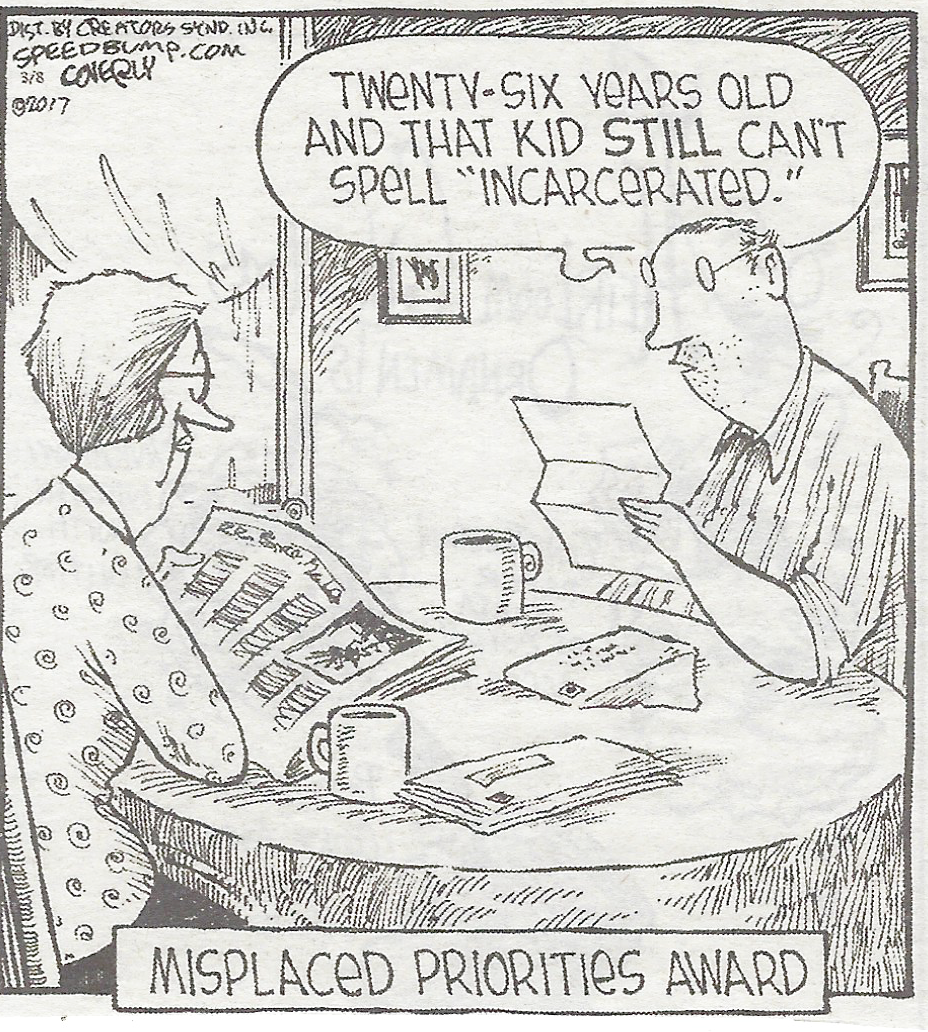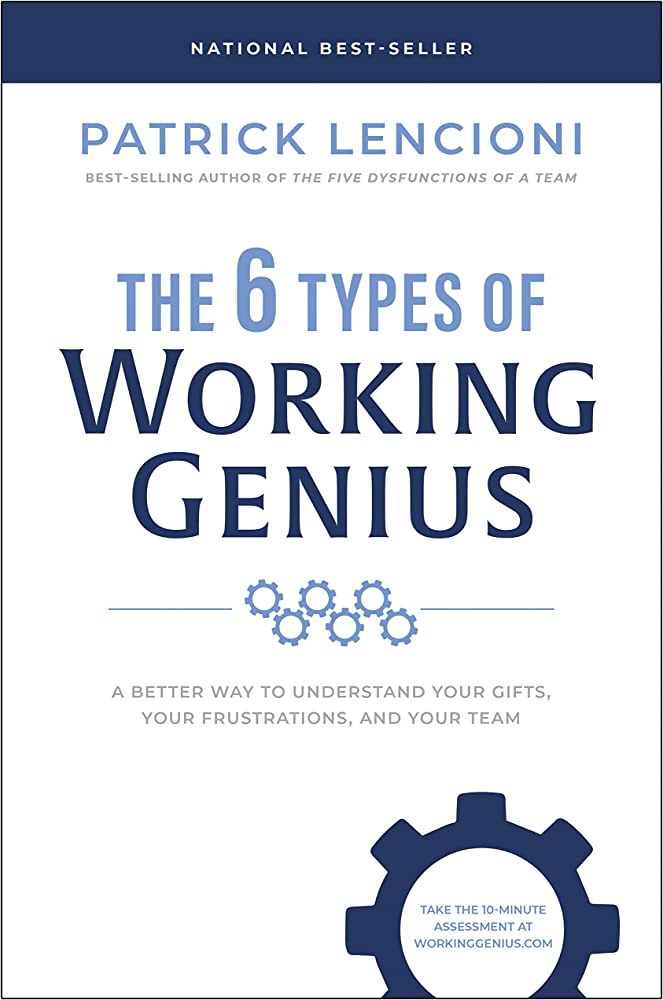LEARN A LITTLE:

Grocery Cart Connections
The truth of the matter is that I very rarely go grocery shopping, but on this particular day I accepted my wife’s invitation and accompanied her to buy a couple of weeks’ groceries. We were on vacation in southern Florida and needed a wide variety of items. We shopped in a well-known grocery store chain and had an uneventful experience—except for the concerns my wife expressed about a few things I was putting in the cart, sometimes referred to by others as “junk food.”
At any rate, the substance of this blog occurred when it was time to check out. The lines were exceptionally long since several available lanes were not open. In addition, there were only two self-check-out lanes and one of those was broken.
We selected a line and began our journey to the cashier. There was much grumbling across the lines with patrons complaining that they had never seen such a backup before. The lines became so long that the store manager came over and opened a line himself. Unfortunately, there were no baggers in any of the lines.
The check-out line we were in actually extended across the main aisle of the store, although space was left for shoppers to get by. As we neared the cashier, I saw a gentleman who seemed to be about retirement age standing behind his cart perpendicular to our line. He had only a handful of items in it. We were now the last cart in line before the aisle opening—the rest of the folks in our line were further down the aisle.
Finally, we got near the front—three carts back—and the gentleman said to me, “Are you the end of the line?”
“Unfortunately not,” I replied. “The line goes all the way down the canned goods aisle.”
I won’t forget the look that came over his face—frustration, anxiety, confusion. He genuinely seemed frozen in place. At that point, it was time for us to move forward in the line.
“Don’t be so sad,” I said. “Just hop in line in front of us. There’s no need for you to go all the way back to the end of the line after you have waited this long.” I made sure that I spoke loud enough for the woman, who had just come up behind us, to hear. She was an active and noisy grumbler.
“Maybe I should just go home and come back later,” he said softly. I pulled our cart back a bit so he could get in line. He did and thanked us with a sigh of relief.
I waited a few moments and then said, “There’s just one thing. You have to have us over for dinner tonight.”
His laughter was full and seemed to lift his spirits. “No,” he said, “I can’t do that. I really don’t eat that well and that chicken in the cart is for my cat. She eats better than me.”
It turned out his name was Oscar, a native of Cuba, whose wife of many years had recently passed away. He only lived five minutes from the grocery store, and his cat was in his car. He said that he had lowered all of the windows to allow air to flow through the car, so the cat would be comfortable. He noted that he had never had to wait in line this long before.
According to Oscar, Rosa, the cashier, a fellow Cuban, was a really “great and friendly person.” She had told him that the store couldn’t find anyone to hire because no one wanted to be a cashier. As he neared the check-out counter, he and Rosa spoke briefly in Spanish. They were laughing and I had the sense he had reported my dinner demand.
The shopper now in front of Oscar had a cart that was spectacularly loaded over the top. I slid past Oscar and the shopper, and asked Rosa if I could give her a hand bagging the groceries. She said that would be great, and so I went to work. I told her that I might be a bit out of practice as it had been a long time since I had worked in that capacity.
She was very friendly and shared the fact that she loved her job and had been a cashier there for 18 years.
Oscar was next and moved through the line. He had so few items that Rosa put them in two bags herself. Oscar was leaving and once again shared his gratitude for our kindness.
He took a few steps more toward the door, and I yelled, “Hey, wait! You didn’t tell us what time we needed to be at your house for dinner!” He waved, and you could hear his laughter as he left the store. Rosa was laughing along with my wife and the grumbling lady behind us.
As it was our turn, Rosa asked us if we had the grocery store ‘discount card.’ We didn’t. She said we should because we would pay a lot less, especially because of the meat we had purchased. I asked how to get one, and she said, “You just have to fill out a couple of forms.” I thanked her and told her I didn’t want to hold up people any longer so we would just pay the full amount.
The shopper behind us (the grumbler) suddenly spoke up and said, “Hey, just let them use my card, and they won’t have the extra charge.”
“No thanks,” said Rosa. “I’ll handle it myself.” She opened the cash register drawer and entered the proper code for our discount. My wife and I thanked her as I bagged our groceries and put them into the cart.
When we were done, I thanked Rosa again. She smiled and thanked me as well. We had taken a few steps toward the exit when she yelled, “Hey, mister! Come back again, I like you!” We laughed and the former grumbler even waved goodbye to us.
The fact is, that experience stayed with me all day and will continue to into the future. It lifted us up. For a short period of time, a small group of strangers had come together and become connected in a positive experience of well-being. Smiling, listening and laughing together are all good for our souls and for each other.
LAUGH A LITTLE:

REFLECT A LITTLE:

Proverbs 1:20-21
Wisdom’s praises are sung in the streets and celebrated far and wide.
Yet wisdom’s song is not always heard in the halls of higher learning.
READ A LITTLE:

The Six Types of Working Genius
Patrick Lencioni (BenBella Books, 2022)
The Six Types of Working Genius was given to me by a friend and colleague, and I was not disappointed in the message. I was familiar with the author, Patrick Lencioni, from his first book, The Five Temptations of a CEO, written in 1998.
In this book and others, Lencioni uses the fable format to present the story’s main points, each of which he develops and explains more fully in subsequent chapters. It’s a very effective approach to help the reader understand and remember the key points. I will not review or discuss the fable itself—don’t want to be a spoiler—but rather share what I think are some of its key, helpful insights.
While I enjoyed the book a great deal, I think the title could be improved. The term “genius” seems to encompass more than the specifically skill-based expertise discussed in this context.
Lencioni explains the model from the perspective of work, that is getting things done. He goes on to say that each of us enjoys different levels of work, and the goal is to discern what kind of work allows us to do our best while maximizing our individual gifts.
It is posited that in examining the nature of work and related gifts, there are six ‘geniuses’ that emerge. A rather brief 42-question survey is available to assist the reader in identifying their particular area of genius. It’s labeled The Working Genius Assessment.
The six areas identified and discussed in the fable are:
- The Genius of Wonder
“The ability to ponder, speculate and question the state of things, asking questions that provoke answers and action.” - The Genius of Invention
“The ability to come up with new ideas and solutions. Such people are drawn toward organization, creativity and ingenuity.” - The Genius of Discernment
“The ability to effectively assess an idea or situation. Such people have greater than usual instincts and intuition and uncanny judgement.” - The Genius of Galvanizing
“This involves the ability to inspire and enlist others. Such persons are exceptional at rallying, motivating and provoking people to action.” - The Genius of Enablement
“The ability to respond to the needs of others, an ability to help others achieve their goals. People with this gift are highly skilled in working with others while providing support and assistance.” - The Genius of Tenacity
“This genius really comes down to the ability to get things done, finalizing projects, crossing the finish line, achieving closure.”
Based on his research and experience, the author suggests that each person can be scaled across the above-mentioned six geniuses. That is, most people have two working genius areas, two areas that would be characterized as working competencies and finally two areas that are working frustrations.
Said another way, of the six genius areas, there are probably two that we enjoy and love, two that we are good at and don’t mind doing but don’t really love, and two areas that we don’t like and may drain us of energy. What’s important is that every team and organization needs to include people that reflect all of the six genius areas to be effective.
The above description is critical to understanding team success and productivity, especially as it relates to the three phases of work. I believe that this is a very important consideration. It’s amazing how often teams do not think about the phases of work or are even aware of where they are in the work flow or task completion process.
In this model, each of the six areas of genius are prominent in the three phases of work.
- In Phase I, Ideation, the genius areas required are wonder and invention.
- In Phase II, Activation, the geniuses of discernment and galvanizing are required to lead.
- In Phase III, Implementation, the final phase, what is required are the geniuses of enablement and tenacity.
As might be expected, every collaborative work and effort requires all six geniuses. The absence of any of these geniuses ensures frustration and quite likely failure.
Finally, it is recommended that every team map its members to share and reveal their areas of genius. If the team or organization unit lacks staff in one or more of the areas, recruit staff to round out the team’s expertise.
Until next time,
Art Dykstra
Purchase this and other recommended books at your local bookstore or through the HighTidePress.org bookstore.
All High Tide Press sales benefit persons with disabilities.
Cherry Hill Consulting Group and High Tide Press
are Visions of Trinity Foundation - 101 Hempstead Place, Joliet, IL 60433


